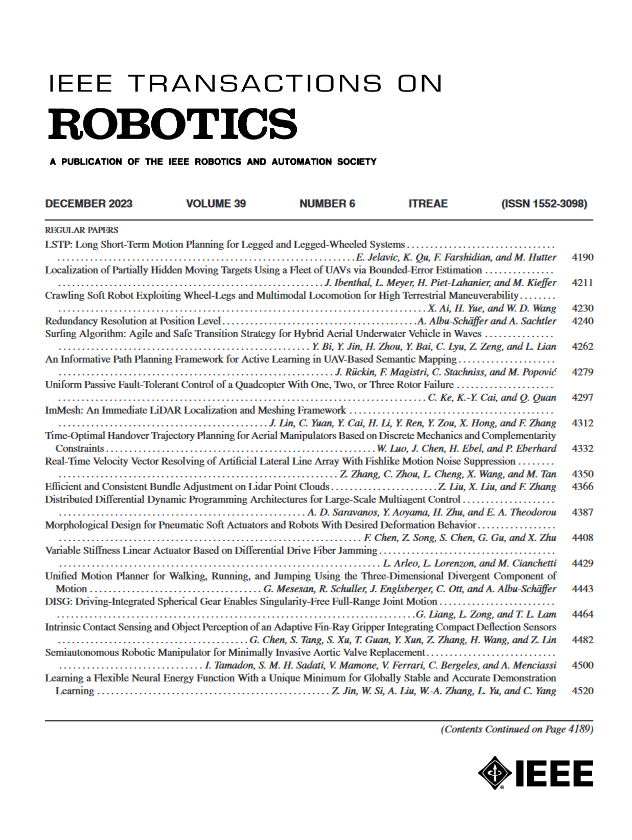时变空间过程的分布式覆盖控制
IF 9.4
1区 计算机科学
Q1 ROBOTICS
引用次数: 0
摘要
本文章由计算机程序翻译,如有差异,请以英文原文为准。
Distributed Coverage Control for Time-Varying Spatial Processes
Multirobot systems are essential for environmental monitoring, particularly for tracking spatial phenomena like pollution, soil minerals, and water salinity, and more. This study addresses the challenge of deploying a multirobot team for optimal coverage in environments where the density distribution, describing areas of interest, is unknown and changes over time. We propose a fully distributed control strategy that uses Gaussian processes (GPs) to model the spatial field and balance the tradeoff between learning the field and optimally covering it. Unlike existing approaches, we address a more realistic scenario by handling time-varying spatial fields, where the exploration-exploitation tradeoff is dynamically adjusted over time. Each robot operates locally, using only its own collected data and the information shared by the neighboring robots. To address the computational limits of GPs, the algorithm efficiently manages the volume of data by selecting only the most relevant samples for the process estimation. The performance of the proposed algorithm is evaluated through several simulations and experiments, incorporating real-world data phenomena to validate its effectiveness.
求助全文
通过发布文献求助,成功后即可免费获取论文全文。
去求助
来源期刊

IEEE Transactions on Robotics
工程技术-机器人学
CiteScore
14.90
自引率
5.10%
发文量
259
审稿时长
6.0 months
期刊介绍:
The IEEE Transactions on Robotics (T-RO) is dedicated to publishing fundamental papers covering all facets of robotics, drawing on interdisciplinary approaches from computer science, control systems, electrical engineering, mathematics, mechanical engineering, and beyond. From industrial applications to service and personal assistants, surgical operations to space, underwater, and remote exploration, robots and intelligent machines play pivotal roles across various domains, including entertainment, safety, search and rescue, military applications, agriculture, and intelligent vehicles.
Special emphasis is placed on intelligent machines and systems designed for unstructured environments, where a significant portion of the environment remains unknown and beyond direct sensing or control.
 求助内容:
求助内容: 应助结果提醒方式:
应助结果提醒方式:


